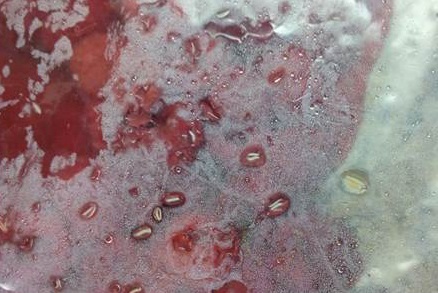Using the plastic baggie test to check for SWD infestation in fruit
Learn how the plastic baggie test can be used as an alternative method to monitor for spotted winged drosophila.
An effective monitoring program is important to minimize SWD damage to crops. Regular monitoring can be used to assess the severity of an SWD infestation, and can allow growers to make informed decisions about pesticide applications.
While traps baited with apple cider vinegar can be used to monitor adult SWD populations, monitoring larvae in fruit is also desirable. The standard salt water test for SWD larvae is effective, and instructions for performing it can be found at Ontario.ca/spottedwing.
However, the plastic baggie test is an alternative method that is ideal for busy growers since it requires minimal effort and can be used in the field.
The plastic baggie test is a quick and easy way to monitor for the presence of SWD larvae in fruit. This test has been found to work for raspberries and could be practical for other fruit infested by SWD such as strawberries, blueberries and cherries.
For this test, it is important to choose ripe, healthy fruit without visible lesions or blemishes. This ensures that any larvae seen emerging will be SWD rather than another drosophila species, since only SWD have the sharp saw-toothed ovipositor necessary to cut into healthy fruit.
Simply place fruit in a plastic baggie, seal and leave in a warm place such as a sunny windowsill for a few hours or up to several days. The heat will drive larvae out of the fruit. They will appear as small white threads on the surface of fruit or on the inside of the bag.
The photo below shows larvae that have emerged from raspberries. In this case, the baggie was left on a desk in a warm office for several days.
The test should be repeated frequently as new fruit become ripe to ensure the most accurate information about SWD infestation.
If SWD larvae are present, you will need to take action to control the population to reduce further damage to the crop. Harvest frequently and remove all unmarketable fruit from the field. OMAFRA's Management guidelines for spotted wing drosophila in Ontario, including pesticides registered for SWD control, can be found online at Ontario.ca/spottedwing.
